Wednesdays at the CSA: Those Perfect Biodynamic Grapes! They’re Ugly!
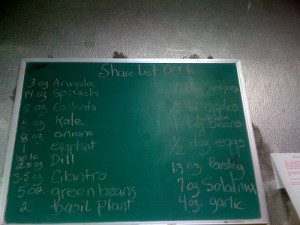
Wednesdays are my favorite day of the week, because it’s “CSA Day.” The day when I pick up our weekly share of biodynamic surprises. We get whatever the farmers were able to harvest, and the abundance and variety is just one of the many special parts of belonging to our CSA.
A special note about the grapes in our share made me realize I was in for a very special treat.
“The special treat this week is GRAPES! They are small, green, Thomson grapes and are the same ones that produce the raisins we have in the CSA. Members from previous years will remember these grapes from last year at this time. We plan to offer them 3 times all together this year every other week, starting now.
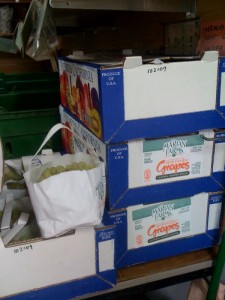
What is special about these grapes? First, they are biodynamic and there is no other biodynamic farm in the country from which to get grapes. (only wineries). These grapes have no growth hormones, no shrinkage, no gibberillic acid which are used even on certified organic grapes and they are picked ripe and fresh to order. They should hold up a week or so refrigerated but
don’t take chances.”
Sure enough, they were out-of-this-world good, like so much of the food at the CSA. I still remember the first time I tried biodynamic produce – I felt like my pores and my bloodstream were literally opening up to receive the food.
I could have eaten them all myself, but being a “good Mother,” I wanted to make sure my boys got their share, so I dutifully gave up some of the grapes and packed them away in their school lunch.
When they returned home, I was disappointed to see that the grapes were largely untouched.
“I can’t eat them,” my 3-year-old told me. “They’re bad. They’re brown!”
It’s true…there were some brown spots.
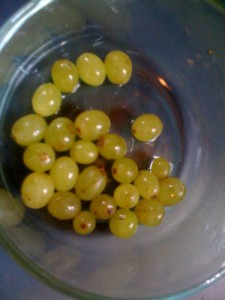
“Honey,” I explained, “God made those grapes. They weren’t made by a machine in a factory, so they’re not all going to be the same. Some will have spots, each one will be unique, because each one is a part of nature.”
He wasn’t buying it.
His verbal skills aren’t advanced enough to construct an argument about how the Chilean grapes I purchase at the supermarket are uniformly glossy, round, and perfectly red….while these are…imperfect (at least to the naked eye).
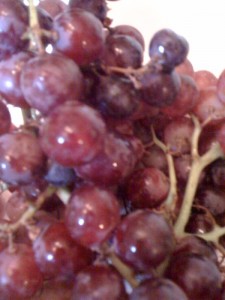
My eight-year-old joined the argument. Forget biodynamics. He was sticking to the “perfect” (albeit less tasty) market grapes.
Have you ever noticed that what appears ugly on the outside can be beautiful on the inside? Not just a story of nursery rhymes or the human condition, but very much the story of real fruit and farm fresh veggies, straight from the garden – or the CSA.
Today was the last week we’ll be getting these amazing biodynamic grapes from the CSA. My kids aren’t eating them. But at least I don’t have to share them with anyone other than my husband!
— Lynn
Filed under Uncategorized | Wordpress Comment (0) |NO, Of Course I Didn’t Buy That “Organic” Shampoo & Then Tell The New York Times About It!
Well, it is true that I did tell a New York Times reporter that I was “furious” about a so-called “organic” shampoo that was anything but organic – or even natural. I even sent him the blog post I wrote about it, which you can read here. In the post, I wrote about how I picked up the “organic” lice shampoo and then realized it was anything BUT organic.
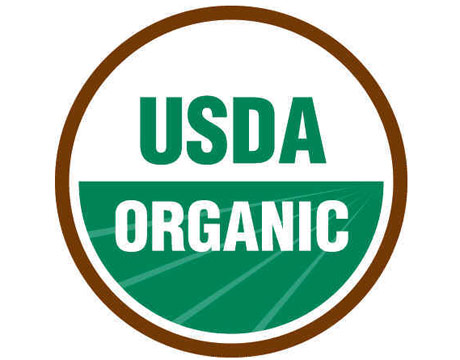
“But skeptic that I am, the first two things I do when I see anything labeled “natural” or “organic” is to check the ingredients list and to look for a USDA organic certification label. Despite the “organic” claims, I didn’t see a USDA label on the Fairy Tales bottles, but I did see a long list of non-organic ingredients including major no-nos like parabens and fragrance.
According to the Environmental Working Group, “parabens can disrupt the hormone (endocrine) system, and were found in the breast cancer tumors of 19 of 20 women studied.” And the EWG reports that fragrance should be avoided in children’s products because of allergens that may contain neurotoxic or hormone-disrupting chemicals. (You can learn more about fragrance through this informative EWG video clip).”
So yes, it’s kind of a thrill to see myself quoted in The New York Times. But honestly, anyone who reads my blog posts or tweets knows that I would NEVER buy an “organic” product that does not have the USDA Organic Seal or the new NSF/ANSI 305 seal. (My original post pre-dated the introduction of the NSF seal).
That’s also why I wrote, “So dear readers, please look for the USDA Organic seal and READ LABELS on personal care products, especially those marketed to children or used by women during childbearing years.”
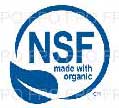
You may wonder why I was “furious” if I didn’t buy the product. I’m still furious. I’m furious that companies greenwash and prey on mothers’ fears, urging them to buy products that are not what they are promoted to be – organic. Mothers look for organic products because they (correctly) believe them to be purer and safer for their kids than products that are not organic. As I told the reporter, I’ve been saddened to see organics pioneers (many of them women) work long and hard to bring truly organic products to market – only to have their USDA certified organic products shelved next to fakers – products with organic on the label but synthetic ingredients inside. Of course they’re cheaper! They’re easier to make!
I’m glad that Whole Foods is cracking down on this, but I’m not entirely optimistic that things will change without a major education campaign from the Organic Trade Association. Surveys have shown that consumers believe “natural” is better than organic – even though there are no standards governing the use of the word “natural.”
So – looking to go organic? Look for the USDA Organic label or the NSF/ANSI305 label.
Anything else? Well, it’s just Greenwashing at the Kiddie Hair Salon (not the supermarket, as quoted!)
— Lynn
Copyright OrganicMania 2010
Filed under Organic Personal Care Products, Organic Product Needs, Whole Foods | Wordpress Comments (11) |Food Matters: The Response to that Post Article about the National Organic Program
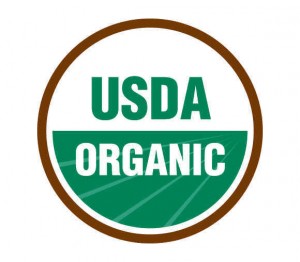
Nearly two years ago I started OrganicMania because I was going crazy trying to figure out when it made sense to go green and organic.
Once I finally understood the food labeling systems (USDA Organic, Made with Organic Ingredients, Green, Natural, etc), I felt a bit more sane.
But as I blogged here last week, the news that Organic Standards may not be all that they seem has turned my world upside down again. Two years later, and I’m still being driven crazy trying to sort out green and organic claims!
The Washington Post ‘s coverage of the controversy surrounding the National Organic Program touched off interesting reactions from organics advocates and observers. I was barely digesting that story and the reaction to it when Whole Foods announced they’ve joined the non-GMO project, and Dean Foods announced a move toward “natural” milk – two developments that will throw yet another wrinkle into the food shopping game. I don’t typically do news summaries here at OrganicMania, but I think these developments are so significant that they merit a recap.
So this is News? Samuel Fromartz, author of “Organic, Inc,” blogged that “The tension discussed in the [Post] article, between those who have always sought to expand the industry and those who seek a more purist vision…. wasn’t particularly news…As for synthetics in processed food, there will always be two camps on this — and both present risks. If synthetics are taken out ..organic processed foods would fade off the shelves. Maybe that’s not a bad thing, but the organic industry would be a lot smaller. If, on the other hand, too many synthetics are let in, and we start getting more organic junk food with a long list of unpronounceable ingredients, that will spell the end of organics too.”
It’s So Unfair! The Organic Trade Association issued this press release taking issue with the criticisms aired by The Washington Post reporters. I wish I had seen more reaction from organics advocates, but this was the best response I could find after much online searching, so I’ve included the key points below.
o “The federal organic standards have not been ’relaxed.’ Rigorously enforced standards can and do go hand-in-hand with growth… Organic agriculture and products remain the most strictly regulated, as well as the fastest growing, food system in the United States today.”
o “Organic agriculture protects the health of people and the environment by reducing the overall exposure to toxic chemicals from synthetic pesticides that can end up in the ground, air, water and food supply, and that are associated with health consequences from asthma to cancer. Extensive pesticide residue testing by the U.S.D.A. has found that conventionally produced fruits and vegetables are, on average, three to more than four times more likely to contain residues than organic produce, eight to eleven times more likely to contain multiple pesticide residues, and contain residues at levels three to ten times higher than corresponding residues in organic samples.”
o “..There is a very specific process that materials must go through before they are permitted for inclusion in organic products. In regards to fatty acids, the USDA regulators followed the recommendation of the National Organic Standards Board (NOSB)… Because the position of the reporters’ sources did not ‘carry the day’ in this public review by no means makes the process illegal, and to characterize it as such is a great disservice to the public.”
Also last week, Whole Foods announced it will begin certifying certain of its private label 365 brand foods through the Non-GMO Project. I believe this will be the first major non-GMO labeling effort of its kind – something we should all support. But I predict that Whole Foods’ move will drive more consumers away from organics and toward the new non-GMO label, since many people buy organics primarily to avoid GMOs.
Perhaps USDA Organic is not the “be all and end all” that its most ardent supporters claim. But it’s one of the best indicators we have of quality food, particularly in the supermarket. As consumers, we need to continue to push for strong organics standards, meaning no relaxation of the current USDA Organic standard. Check out this campaign promoted by Terressentials Organics to solicit consumer support for upholding organic standards. You have until August 31st to have your voice heard by the National Organics Program.
My bet is that the continued expansion of organics, the growth in the natural foods and green categories and the new non-GMO label will continue to make food shopping a challenge – meaning I’ll still be going crazy! (At least it will give me plenty to blog about here at OrganicMania!)
Check out the other wonderful posts in this month’s Green Moms Carnival, hosted by Alline at A Passion for Green Business.
What do you think? Are you still going crazy trying to sort this all out? Leave a comment and share!
— Lynn
Copyright OrganicMania 2009
Filed under Food, GMOS, Organics, Organics vs. Conventional Foods | Wordpress Comments (9) |Friday Savings Tip: Organic Coupons
Remember the coupons that Mom clipped? They still come in the Sunday paper, but typically they’re for unhealthy processed foods and toxic cleaning products. Finding savings on green and organic products can be a challenge, which is why OrganicMania is posting about savings on Fridays, before most of us head out to do our weekend grocery shopping.
Do you know about Mambo Sprouts coupons? Through these coupon books, you can grab savings of 50 cents to $1.00 off popular organic items including Organic Valley milk, Ian’s™, Kashi™ cereal, Oregon chai, BACK to NATURE granola, and more.
They’re available in most organic grocery stores, but unfortunately some stock them at the check-out register. This makes no sense! You’ve already done your shopping by that point! If you’d like to plan your shopping trip before you reach the check-out, you can find the organic coupons online here.
Happy Shopping!
Lynn
Copyright 2008 OrganicMania
Filed under Coupons, Food, Green Ideas & Stuff, Organic Prices, Organics, Savings Tips | Wordpress Comments (5) |Interview: Seth Goldman, Tea-EO of Honest Tea, Part 2
Part 1 of the OrganicMania Interview with Seth Goldman is here.
OrganicMania: Honest Tea’s kids’ tea, Honest Kids, is sold in plastic pouches that aren’t recyclable. I know you have information on the wrapper about your relationship with Terracycle, but it’s a bit hard to follow…you have to go to the website to get more information, for example. Not many tired Mothers have the presence of mind to do that before disposing of the packaging.
Seth Goldman: Actually, that plastic pouch is the most environmentally efficient packaging we have. By weight, the pouch is 97% product, and only 3% packaging so there’s very little waste. We’re not using fuel just to ship packaging.
Since we launched that line last year, several thousand pouches have been collected and turned into bags through our relationship with Terracycle. We are reaching 1,000 collection sites around the country, in places like schools, youth centers, and other places where kids gather.
(Ed Note: You can learn more about this re-use program here.)
Still, it’s a challenge. We live in a consumer society. The definition of a consumer is to destroy, and the definition of sustainability is the exact opposite. How do you live a sustainable life in a consumer society? You’re setting yourself up for a contradiction.
I just participated in a class discussion at the Yale School of Management, and I talked with the students about environmental impacts of business. What we can try to do is to take our environmental practices and our consciousness about our packaging and try to move things in a different direction.
OrganicMania: Still, when we were kids, we just didn’t use this much plastic. I remember paper straws, for example. Couldn’t you use a paper straw with the drink pouch instead of plastic?
Seth Goldman: Well, you need some sharpness to punch in the drink pouch and insert the straw. You couldn’t do that with paper.
OrganicMania: I see there are a lot of issues to consider when looking at which materials to use…it’s especially interesting to hear about the trade-offs between plastic and glass. I think most people are unaware of these trade-offs and just tend to think that plastic is bad and glass is good because of recycling. But as you’ve shown, you can save fuel and cut carbon emissions through plastic use and then encourage re-use of plastic through programs like the one Honest Kids has underway with Terracycle.
Speaking of kids, recently I blogged about what I call “Organic Kid Marketing” – organics companies that are using cartoon characters on packaging to market their products directly to kids. It’s notable that you chose not to do that with Honest Kids. In fact, there are pictures of fresh fruit on the Honest Tea boxes and drink pouches, yet it’s obvious it’s a kid’s drink because of the iconic plastic pouch shape that speaks to kids. Did you have heated internal discussions about whether or not to engage more directly in “Organic Kid Marketing?” And do you know the ages of typical Honest Kids consumers?
Seth Goldman: It was a deliberate decision not to do something like putting “Elmo” on the package, because we didn’t want to limit the age of the people who would be interested in drinking Honest Kids. In fact, I know a lot of adults who drink it. People write in and tell us, “I drink it in my office,” so it’s obvious it’s not kids who are doing that! We really don’t know the exact age range of most of the Honest Kids drinkers…our information right now is mainly anecdotal. Kids do like to be seen with it. We know we’re not losing opportunities with it because there’s not a character used to market it. In fact, use of a character probably would have limited the market for Honest Kids. I know there are kids in middle school drinking Honest Kids. You wouldn’t catch a sixth grader with a Power Rangers juice box! So while we don’t know the exact age, I think age 2 to 12 is probably the right way to think about it.
And that’s another positive part of our deal with Coca Cola. We’ll get a lot more distribution of Honest Kids, including, hopefully, at places like McDonalds.
OrganicMania: Obviously, your professional life is all about organics. What about your personal life? You have kids, too. How do they deal with all the focus on organics?
Seth Goldman: We’re vegetarian, we eat mainly organic, we have a composter in the back, we drive a hybrid, I ride my bike a lot…but that said we’re living in a consumer society so we deal with the same contradictions everyone faces. My kids are sometimes teased about it, but in a fun way.
OrganicMania: You’ve used your blog, Seth and Barry’s Blog, to address customer concerns about Coke’s investment in Honest Tea. When you’re not doing your own blogging, which blogs do you enjoy reading?
Seth Goldman: I like reading Emily Bazelon on Slate, I like reading some of the blogs on Inc.com and Stonyfield Farm’s blog.
OrganicMania: Thanks so much for your time, Seth! This has been a really interesting discussion – I think people will enjoy it.
— Lynn
Copyright 2008 OrganicMania
Filed under Interviews, Marketing, Organic Mommypreneurs, Sustainable Packaging | Wordpress Comments (6) |Interview: Honest Tea Tea-EO Seth Goldman (Part 1)
Big news hit the organics world in early February, when Coca-Cola took a 40% stake in Honest Tea, the nation’s best selling and fastest growing organic tea company. Seth Goldman, Honest Tea’s co-founder and “Tea-EO” sat down with OrganicMania in March at Honest Tea’s light filled, eco-friendly headquarters in Bethesda, Maryland for this interview touching on sustainable packaging and the organics movement.
Note: With my background in corporate marketing, I’m accustomed to seeing CEOs flanked by their PR people. Given Coke’s considerable stake in the company, I half-expected a visitor from Atlanta to join us. But it was just Seth and yours truly for 45 minutes. Here’s what was discussed:
OrganicMania: What sparked your interest in organics and sustainability?
Seth Goldman: I’ve always had environmental awareness. I’ve always spent a lot of time outdoors. I worked at Calvert Group where they had environmental screens. I was leader of a campus group for students for responsible business, now called NetImpact, although I was more focused on economic opportunity than environmental issues.
After starting Honest Tea, it was only natural to get more focused on and more concerned about the environment and agricultural practices. One of the things I learned is that tea is one of the few products that is never rinsed. If you have a tomato or an apple, you can easily rinse it before eating it. But if chemicals are sprayed on tea leaves, the chemicals stay on the tea leaves until hot water is poured in the teacup. In countries like China and India, there is a lot less oversight. Unless there’s an organics inspector, it’s safe to assume atrazine is used, which is the herbicide believed to be responsible for dual sex frogs. There are concerns about safety and the affects on people. So it was in the process of learning about tea for Honest Tea, that I learned about organics. We looked at every responsible option available to us. And the beginning was the use of organic sweeteners.
OrganicMania: What about packaging? One of the main issues that bothers green consumers, like those who come to OrganicMania, is that even if you take the time, energy and money to seek out an organic or green product as an alternative to a traditional product, odds are the organic or “green” product will still be packaged in plastic or some other environmentally-unfriendly packaging. How long will it be until we have biodegradable packaging for organics and green products? What kinds of strides are being made in that area?
Seth Goldman: It’s an evolution. There are no simple answers, although technology is advancing, and that will help. One example of this is corn resin, which can be made into biodegradable plastic for some products. But that won’t work with Honest Tea, because we heat up to 180 to 190 degrees and biodegradable plastic couldn’t withstand that kind of heat. Some biodegradable plastic will work with commercial composting, but not with home composting, and commercial composting is not yet widely available. You can’t put biodegradable plastic in a recycling bin because the plastic is not a PET, and so that bottle contaminates the waste stream.
There are some interesting ideas being proposed, for example, to increase the use of recycled content. Coca-Cola is doing a lot of this, and through Coca-Cola, we’ll now be able to increase our recycled content. Can we get to over 20 percent recycled content in our bottles? I would love to see us go further in that direction. On our own, Honest Tea doesn’t command enough attention from suppliers to make them supply us with recycled content in our bottles, but when we are associated with the world’s largest beverage company, we have a better chance to get their attention.
There are other advances in packaging that are exciting. For example, looking at second uses for products. What about peeling off the skin on a product? So that even if the outer skin couldn’t be recycled, the inner skin could be recycled. These are just ideas, but again, this is part of the reason I’m excited about our deal with Coca-Cola. The Coca- Cola R&D centers are doing a lot of interesting research in these areas.
Visit OrganicMania.com tomorrow for Part 2 of this interview with Honest Tea co-founder and “Tea-EO,” Seth Goldman, where he’ll continue the discussion about plastic packaging, sustainability, and Honest Tea’s deal with Coke.
What do you think about Seth’s viewpoints? Leave a comment and share!
— Lynn
Copyright 2008 OrganicMania
Filed under Interviews, Marketing, Organics, Organics vs. Conventional Foods, Sustainable Packaging | Wordpress Comments (3) |Remembering the Edible Schoolyard
Last week OrganicMania published a series of posts about “How to Get Organics and Healthier Foods into the Schools.” A comment from MamaBird led to today’s guest post, where she writes about her time teaching at a school with one of the nation’s most progressive school lunch programs. What else would one expect from Berkeley, California?
In my students’ minds, the crisp lettuce in the field we skipped through on our journey was just as fascinating as the computers that waited amidst the stacks of books at our local library. It was 1998, and most of the young men and women loping
past the garden had no access to computers at all (many had just arrived in the country). But it was the vegetables that held their attention. On a field trip with an English Language Learner class, I couldn’t help but marvel at the audible excitement and interest over the garden and its teen gardeners. Teacher Patti Rathwell got her students into King’s school kitchen routinely, brought food into the class to illustrate
everyday concepts, and the students’ families brought in delicacies representing cuisines from all over the world to mark special celebrations. Speaking over a dozen languages, the premium form of communication among our students was laughter,
gesture, and the anticipation of flavor.
In 1998, I was a student teacher from UC Berkeley’s MUSE Program apprenticed to two classrooms at Martin Luther King Middle School. The nascent Edible Schoolyard
program, started in 1996 by a collaboration between Chez Panisse and the school
(via the Chez Panisse Foundation), was thriving by the time I landed at King. As I recall, the kids called it the “Peace Garden” and every one of the kids I taught, from
middle school second language learners ranging from 6th to 8th grade, to the 8th
graders in my humanities class, was itching to get their hands dirty. You could almost see the infusion of energy into the crops. These kids were fascinated with what their peers were creating, with their bare hands and brains. They longed to be longed to be outdoors, to work with the soil. But even more, they longed to be in the kitchen, chopping and slicing and mixing and…eating! I’ve never seen such a worthwhile channeling of teen squirm in all my life.
I’ve been thinking about the Edible Schoolyard recently, as I face the reality of
public school lunches here in DC for my daughter and her friends. I’m heartened by the fact that Berkeley, and other schools like Wisconsin’s Appleton Central Alternative School (ACAS), have adopted programs harnessing the power of
delicious and satisfying food to improve not just health but performance. Lunch
Lessons: Changing the Way We Feed Our Children, by Ann Cooper and Lisa Holmes, is a riveting book that chronicles success stories like the Edible Schoolyard and
Appleton’s ACAS, while giving parents concrete suggestions: healthy recipes and contact info for organizations working to effect change in lunch programs.
One school that’s crafted a school environment rich in healthy food and a focus on physical education is Appleton’s ACAS (which banned vending machines and instituted fruit-and-vegetable rich breakfasts and lunches). Appleton has quantifiably documented the impact of providing “nonchemically processed foods that are low in fat, salt, and sugar, as well as fresh fruits and vegetables.” Improvements seen include: more focused on-task behavior, increased cognitive development,
fewer health concerns, fewer discipline problems, better attendance, and better nutrition outside of school.
Wouldn’t it be great if all of our schoolchildren (many of whom rely on school
breakfast and lunch programs as their primary source of nutrition) got a side of nutrition education and sustainable agriculture with their salad bar lunch?
Where to look for more info about transforming your own school? Check
out the following organizations for ideas.
The Center for Ecoliteracy, Lunch Lessons, Better School Food, Food for Change, and Farm to School.
Copyright 2008 MamaBird
Filed under Biodynamic food, Food, Parenting, School lunches | Wordpress Comments (5) |Part 2: How to Get Organics and Healthier Food into the Schools
As we all know, shopping for organics and fresh produce for our own households can be complex. Just imagine the challenge of supplying an entire school system with farm fresh foods. According to activists interviewed by OrganicMania, this is one of the key reasons so many public school systems nationwide have resisted parents’ entreaties for more farm fresh and organic foods in the schools.
Check out this ABC News interview with Two Angry Moms who agitate for improvements in the nutritional content of school lunches.
[youtube]http://www.youtube.com/watch?v=-yjQgxZrEQ4[/youtube]
Last year, parents in my community agitated for change in the school menus. Their efforts were detailed in the media here. Yet when I looked at the school menu last week, I saw no evidence of change.
I called Mike Tabor, a farmer who was one of the activists quoted extensively in media coverage of last year’s school menu meetings. He told me that with last week’s Maryland Senate passage of “Farm-to-School” legislation, there is hope that farm fresh foods will soon be available to in public schools throughout Maryland.
It always takes community involvement to enact change. Clearly that’s the case with school lunches. What can you do?
Check out these resources:
Two Angry Moms Resource Page for School Lunch Change
Please send me your stories of success with improving school lunch quality. And check back next week for a guest column from Mamabird, who as a school teacher, saw first-hand what it was like to bring farm fresh produce into the public school system.
Please read Part 1 of this series too!
— Lynn
Copyright 2008 OrganicMania
Filed under Food, Organics, Organics vs. Conventional Foods, Parenting, School lunches, Tips | Wordpress Comments (2) |Organic “Kid Marketing”– Feeling the Onslaught?
So long, Tony the Tiger. Hello, Peter the Probug.
I’ve posted here about how my son recognizes “Kid Marketing” at the grocery store as the hydrogenated oil and sugar-laden processed treats that are major no-nos.
Suddenly, it’s getting a lot harder to say “no” to “Kid Marketing,” because my son also recognizes the USDA Organic Seal. Now he says sweetly, “But Mama, it’s organic! It must be good for you even if it is Kid Marketing.”
And most times, he’s right…the “Organic Kid Marketing” products may still be good for him, but they often cost several times the price of conventional organics, which are already expensive enough!
I imagine that if my kid wouldn’t eat anything healthy at all, I might welcome the overtures of the organic kid marketers. But since he was doing fine with regular old organics, the organic kid marketing hype is an annoyance.
Is anyone else sharing my feelings of resentment at the onslaught of Kid Marketing at the organic grocers? It used to be that organic shops were a refuge from Tony the Tiger, Lucky the Lucky Charms Leprechaun and all the other Kid Marketing icons. I could take my son with me to the organic market, buy a carton of yogurt, some bulk oatmeal, and be done with the shopping with a minimum of fuss and whining.
But I knew I was in for it last week when my son breathlessly told me after school one day, “Katie has the coolest yogurt at lunch. I want some! It’s orange and it’s ORGANIC!”
At the organic market that afternoon, he pointed at a garish orange four-pack of Lifeway Organic Probiotic Whole Milk Kefir Cultured Milk Smoothies. That particular day, I was too tired to say no …it was after all organic and it was just yogurt.
But later I realized that I already have several large containers of biodynamic yogurt in the fridge, courtesy of our CSA. And he liked that yogurt just fine. So why was he so insistent on this yogurt?
“Well, it tastes good,” he responded.
I reminded him that we had plenty of yogurt in the fridge that tastes good.
“It’s ORANGE. My favorite color,” he announced.
“And?” I prodded.
“And it has an alien on it too!”
So I’m buying more yogurt with more packaging because my son wants orange packages with aliens? (Actually, it’s Peter the probiotic bug, according to the packaging).
Look, this story is a bit embarrassing to tell, but I know I’m not alone here…am I? Tell me, what’s been your experience with “Organic Kid Marketing.” Are you starting to feel the onslaught too?
Or is it just the products that has me down? Perhaps. Why don’t the frozen vegetables come with aliens on their bags? Works for me!
— Lynn
Copyright OrganicMania 2008
Filed under Food, Marketing, Organic Product Needs, Organics | Wordpress Comments (6) |How to Get Organics and Healthier Foods into the Schools
On Friday I had my first look at the public school my son will attend. While waiting for the open house to begin, I picked up a lunch menu. What I saw shocked me.
Pizza twice in one week? A choice of a hot dog or pizza? And needless to say, no organic milk. And this in a school district that prides itself on its “healthy choices.” McDonald’s is healthier…at least they sell salads and vegetables that are not fried!
[youtube]http://www.youtube.com/watch?v=XhG4jugEad0[/youtube]
If the schools were able to figure out how to get soda pop and candy and commercial advertising and TV into the schools, how come they’re having such a hard time figuring out how to get even a smattering of organics and healthier options into the schools?
This is part one of a series of posts about getting healthier foods in the schools. Please check back Friday for the second post in this series! In the meantime, please leave a comment and share your experiences with school lunches.
— Lynn
Copyright 2008 OrganicMania
Filed under Food, Parenting, School lunches | Wordpress Comments (4) |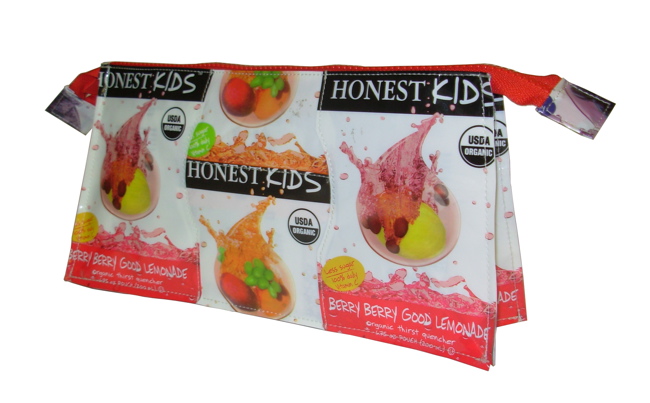

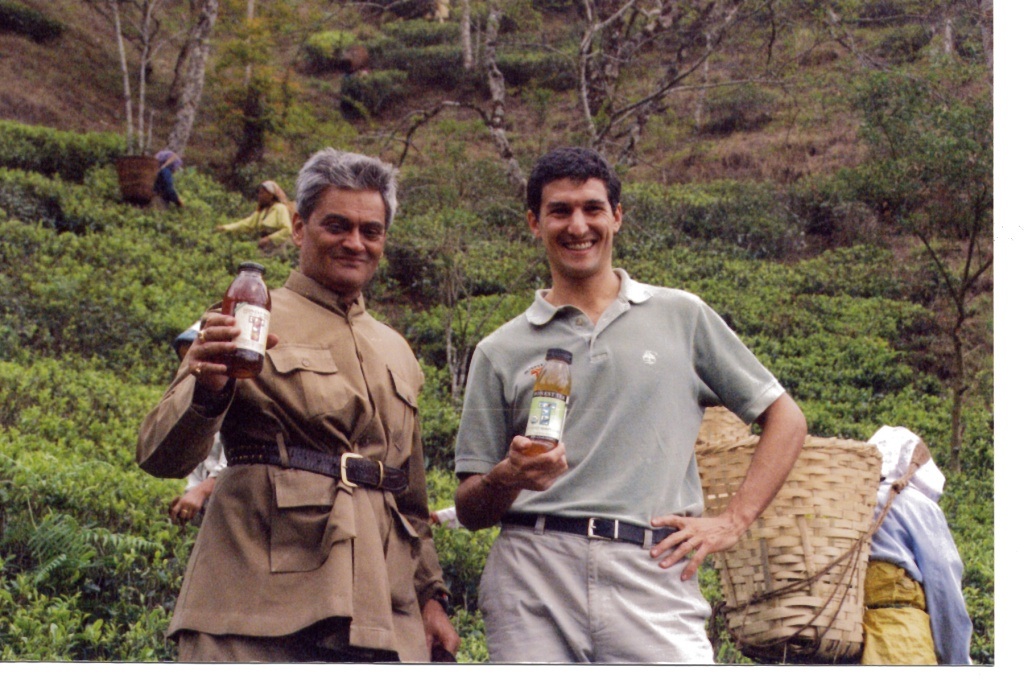
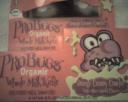
 My StumbleUpon Page
My StumbleUpon Page



